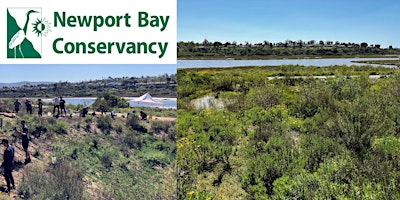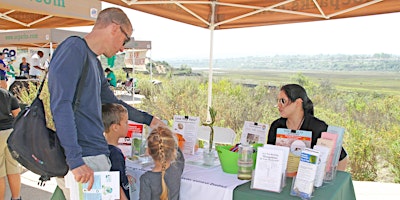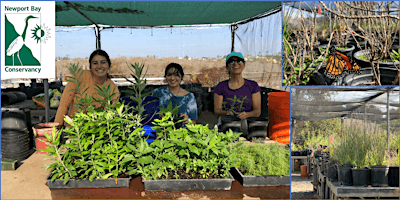A habitat is a type of place where a particular animal or plant or group of animals and plants is most at home. In this type of place the general combination of food, water, shelter and space allows these plants and animals to thrive. Within any one geographical area there may be several habitats. The classification of habitats is a subject of much debate among naturalists. Some bird watchers, for instance, feel that as few as five habitats are sufficient to define where birds are seen at Upper Newport Bay. On the other hand some botanists have defined as many as 13 different habitats and as many as 21 distinct plant communities here at the Bay.
High Tide Habitat Map Low Tide Habitat Map
The set of six habitats described below has been found to be of most benefit in categorizing the plants, birds, marine life and other life of Upper Newport Bay in a simple and consistent manner:

The Habitats of Upper Newport Bay
Open Water – The bay itself as distinct from the bottom or the shores of the bay. Fish swim in open water and seabirds are seen overhead. The water is teeming with plankton. Seaweeds (algae) and submerged marine plants such as eel grass may be present.
Mudflat – The areas of the shore exposed at low tide. As the name implies these areas are generally muddy and flat. Plant life is limited to algae. Worms, mollusks and other marine critters are found in abundance in the mud and shore birds are seen pecking at the surface or probing below the surface of the mud for food.
Saltmarsh – The area of the shore from the mud flats to the high tide line. The plants in this area are adapted to being submerged in water and growing in salty soils. Cord grass thrives from the mid tide region upwards. Pickleweed is found in abundance in the high tide region and adjacent dry land which has salty soil.
Freshwater Marsh/Pond – Water-loving plants such as cattails and sedges grow in and around the water. Many of these plants can tolerate mild to moderate salinity. Freshwater fish, crayfish and other critters live here. Numerous ducks will be found here, particularly in winter.
Riparian – The area along side a river or stream or on the banks of a lake or pond. The plants in this area like moist soil but do not necessarily grow in the water. Willows are common. Cottonwoods and other trees and large shrubs are found. Bushtits, finches and hummingbirds will be seen here.
Upland – The bluffs, cliffs and undeveloped mesas around the bay make up the upland habitat. The dry slopes abound with sagebrush, buckwheat and drought-resistant succulents such as prickly pear cactus that are characteristic of the coastal sage scrub plant community. Turkey vultures and other birds of prey are at home here. They are seen soaring effortlessly in the upward currents of warm air along the bluffs. On the mesas the coastal sage scrub often gives way to patches of grassland.
Many plants and animals may be found in more than one habitat and the boundary between two habitats is not necessarily well-defined. In particular, because Upper Newport Bay is an estuary, the distinction between saltwater and freshwater marsh is not always clear. There is a region where the seawater coming in from the ocean and the freshwater entering from San Diego Creek mix. Here the water is moderately saline (salty). It is said to be brackish. The nature of this brackish region changes as a result of both the twice-daily ebb and flow of the tide and the big seasonal difference in flow along the creek.
One of the things that makes Upper Newport Bay so interesting and exciting is the ability to experience so many different habitats on a short nature walk. At Big Canyon algae, cord grass, pickleweed, salt grass, cattail, willow and cactus can all be seen in a quarter of a mile hike. Terns, sandpipers, ducks, songbirds, hawks and many more birds are found there.










